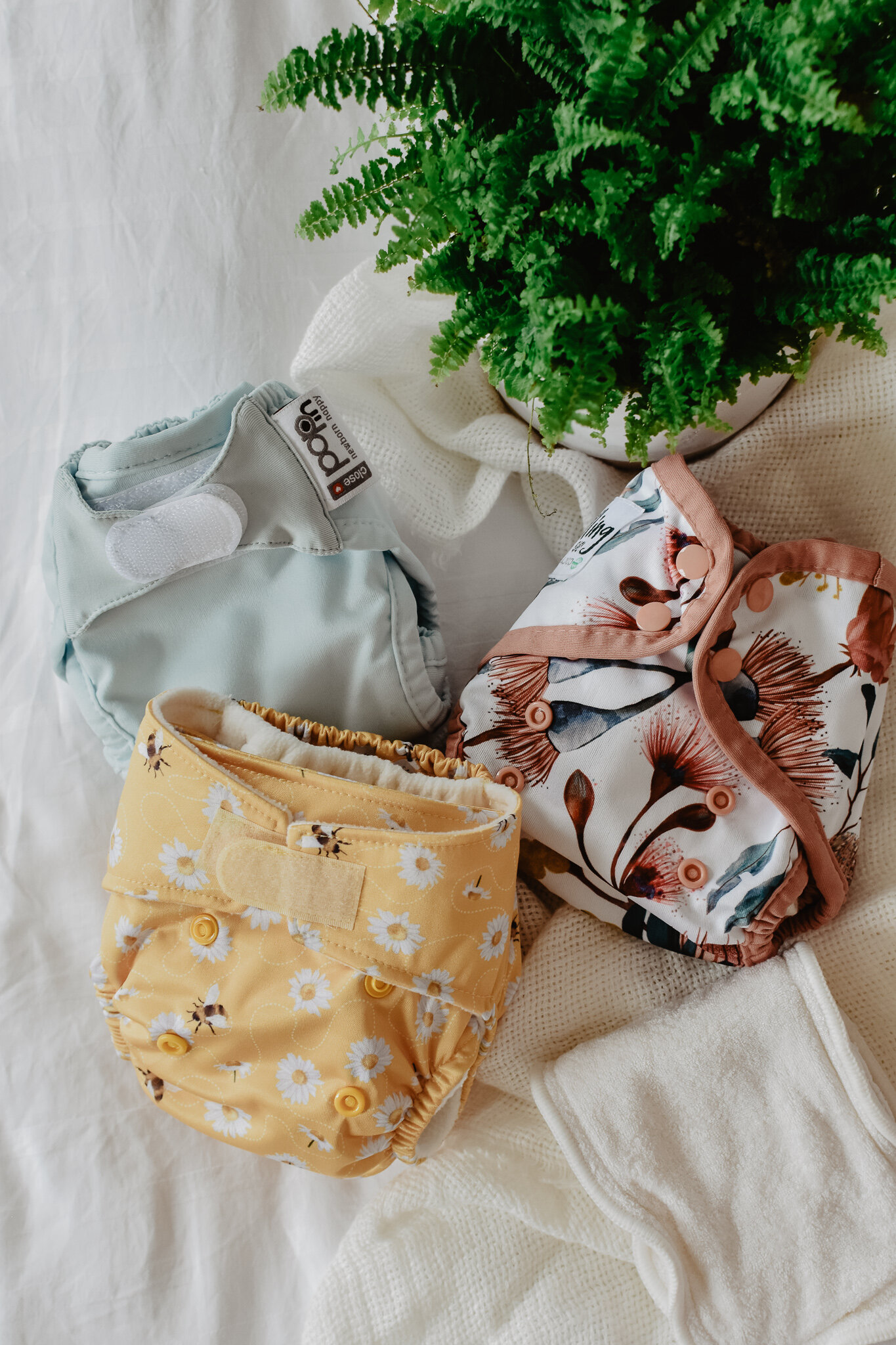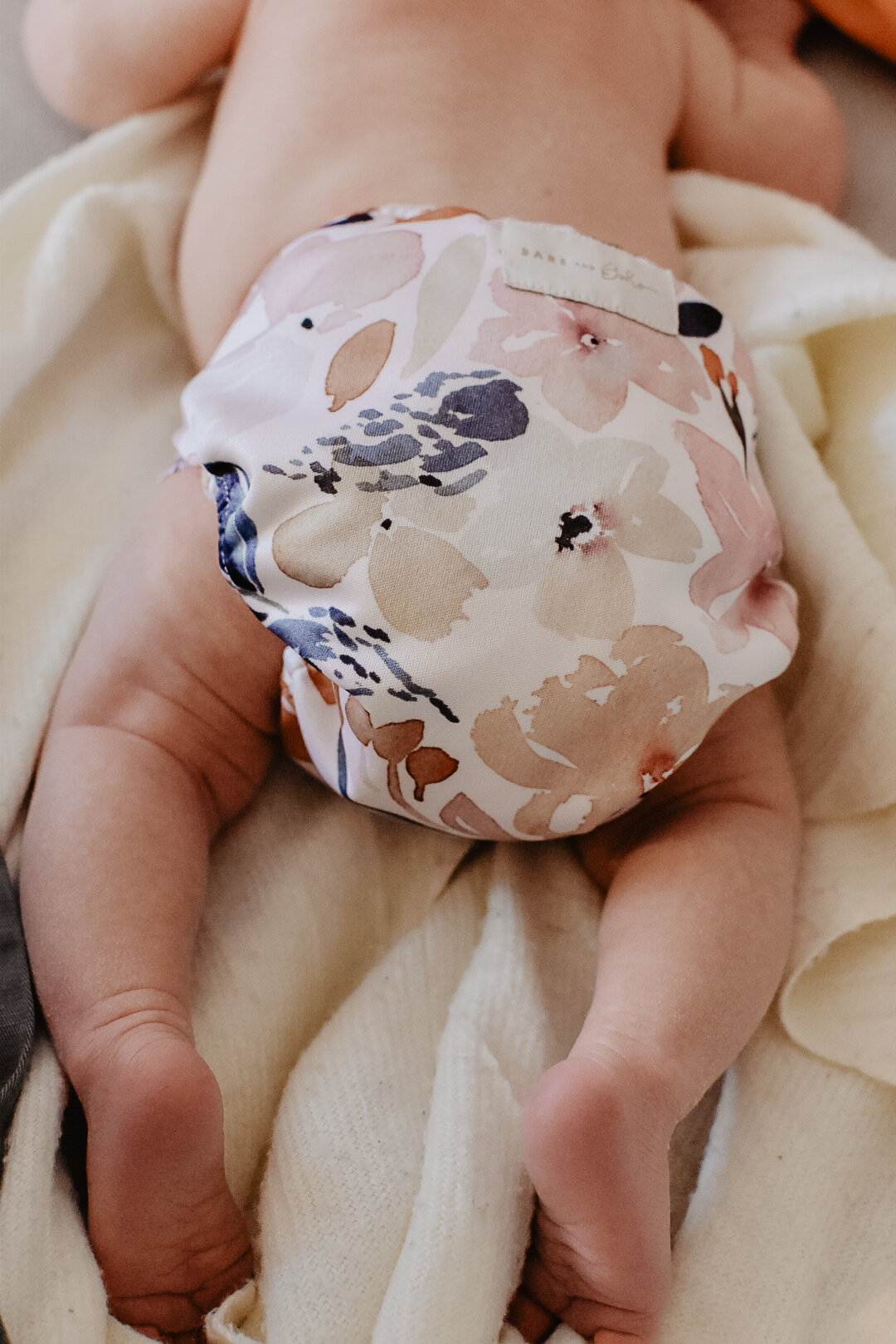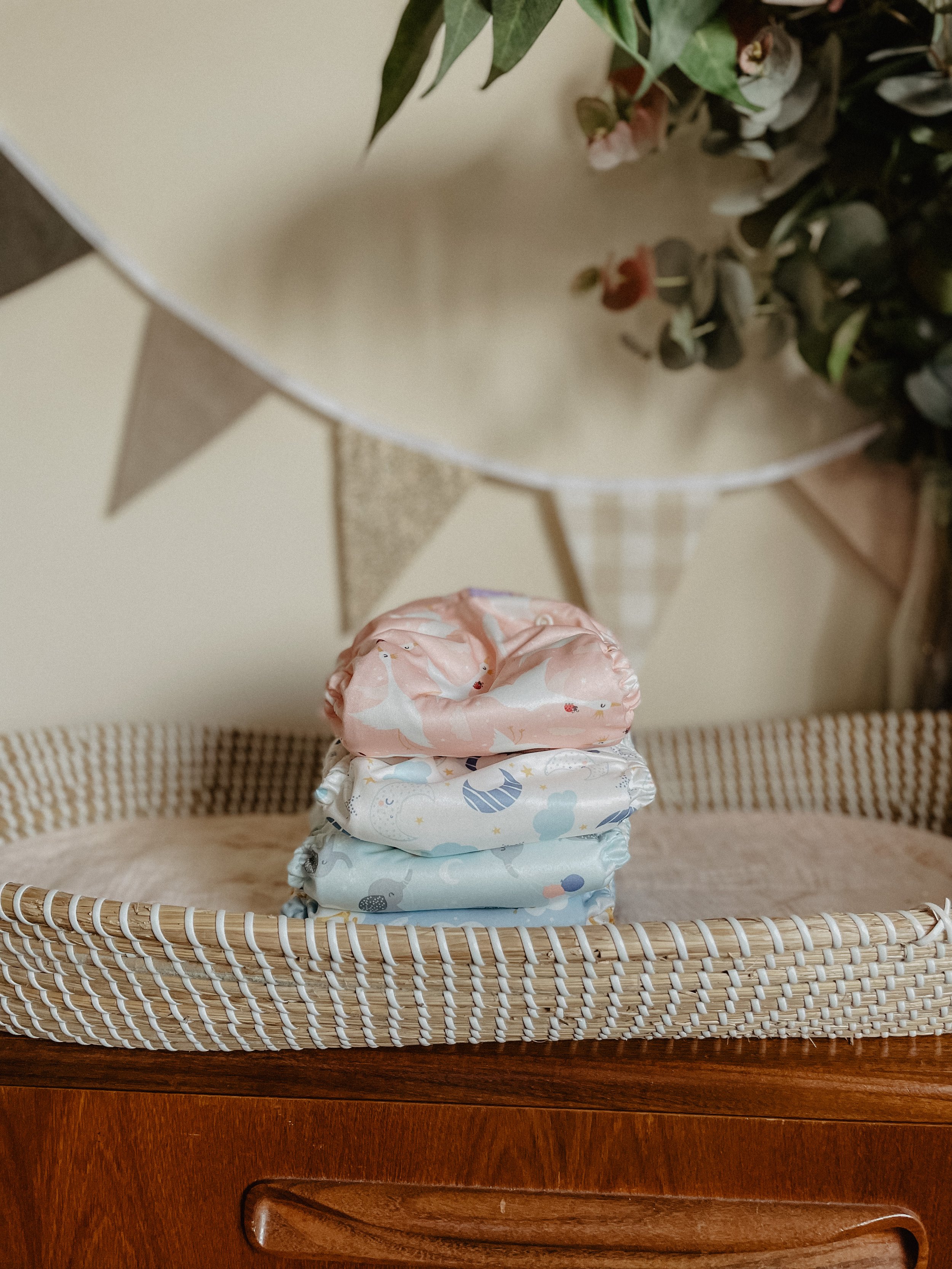A Complete Guide to Newborn Reusable Nappies
It was 9pm on 30 December 2019. Margot was barely two hours old, and after some glorious, beautiful skin-to-skin time, our new baby was ready for her first nappy. It was the most natural and simple thing in the world to reach for the cloth nappy stash we’d prepared. The nappy went on with no more fuss than a disposable, and later that night, came off just the same.
This is newborn reusable nappies at their best. No more complicated than disposables, and with all the wonderful benefits of a natural, eco-friendly option. Using cloth nappies from newborn age can be incredibly easy, but it’s worth being prepared before you set out on this journey. Margot was my second baby and I’d already been using cloth nappies for over a year with my older child, so cloth felt like second nature. But when I realised how easy it could be, I wished I’d started on day one with my eldest too. Today I’m imparting all that wisdom so that you can have the confidence to start your own journey from the first hour, if that’s right for you. Let’s go lovelies!
Can I use reusable nappies on my newborn?
Reusable nappies are safe, effective and often really easy to use for newborns. However, whether they’re right for you and your family from day one depends on a few things. Firstly, if you’re new to cloth nappies and new to babies (that is, it’s your first little one!) it’s worth considering whether you think you will be able to cope with the learning curve and extra washing that will come along with using cloth on your newborn.
For some first time parents, choosing to use cloth is just another in a long list of things they’re learning for the first time anyway, so they figure they can cope with one more, whereas others prefer to keep things as simple as possible to begin with. Have a think too about how much help you will have. You’re unlikely to be the one doing the washing and possibly even the nappy changes for the first few weeks, especially if you have a c-section. If you know you’ll have a supportive partner and/or parent around to help, then it may be quite straightforward.
If you’ve used cloth nappies in the past, then I would absolutely recommend using them from newborn with your new baby! Having dealt with cloth for a weaning baby, the newborn age is an absolute breeze!
Do I need special newborn size reusable nappies?
Most modern cloth nappies are one size, and they’re often called ‘birth-to-potty’ because they’re designed to fit a little one from birth all the way to potty training. However in reality, most nappies won’t fit until at least 8lbs (3.6kg) and sometimes they don’t even fit until around 12lbs (5.5kg).
The difficult part here is that all babies are different, and all nappies are different. Some nappy brands make one size nappies that are very small, while others are quite large. Likewise some babies are tiny or have skinny legs that make it difficult to fit into any one size nappy until they’re a few months old, whereas others come out wonderfully chubby and will fill a one size nappy from day one.
With all that in mind, the general principle I would give is that if you want to use cloth nappies from day one, it’s worth buying some newborn size nappies. If your baby is small, you’ll be glad to have them, and if your baby’s big, you’re still likely to get a couple of months’ wear - there is usually some overlap between a newborn and a one size nappy and some newborn sizes will even fit up to around 18lbs.
On the other hand if you’re happy to wait a few weeks, then I’d skip the newborn size and wait until your baby fits one size. This is usually the preferred choice for first time parents or those who are new to cloth nappies.
No more complicated than disposables, and with all the wonderful benefits of a natural, eco-friendly option
What options are there for newborns?
Just as with one size nappies, there is a wide range of newborn reusable nappies out there. Which one is ‘best’ for you will depend on what you need from a nappy. Some people want a nappy that’s very easy to use, others need something affordable, others will care more about drying time. That being said, there are three broad categories that are worth considering for newborns.
The easy option
There are a number of cloth nappy brands that make newborn sizes of their birth-to-potty nappies, and they’re often very easy to use. They might be:
- an all-in-one, where the nappy is all in one piece
- an all-in-two where the two parts snap together
- a pocket nappy where the absorbent inserts tuck into a pocket
But in all cases it goes on and off just like a disposable nappy, so it’s really easy to use and good for out and about. You can find out more about different types of cloth nappy in this post.
‘Easy’ nappies like these also tend to be pretty trim, so if you want to avoid a very bulky nappy, you might want to consider one of these kinds.
On the downside, they’re quite an expensive option, especially when you may only use them for a few months. They are also tend to be less absorbent than the other options we’re going to look at, so if you have a heavy wetter (which most newborns are), you may need something more reliable.
Some of my favourites of these easy-to-use nappies include:
Thirsties newborn natural all-in-one - The most reliable of the newborn all-in-ones, but still not as absorbent as other options I mention below. Don’t confuse it for the standard (synthetic) all-in-one, make sure you get the ‘natural’ version.
Close Pop-In newborn - An all-in-two nappy that is one of the smaller newborn nappies. They’re not that absorbent so often need boosting.
Seedling Mini Fit - A super reliable pocket nappy. They’re a little bulky but worth it for the reliability.
Baba + Boo newborn nappy - These are super reliable pocket nappies, but they are really large. They didn’t fit my little girl at birth (she was 6lbs8oz / 2.9kg) but they do still fit her now at 18 months and 22lbs / 10kg.
The super reliable option
Another option is to use a fitted nappy. This is a nappy which is entirely absorbent, which is used under a waterproof cover. They’re incredibly reliable, and also excellent for containing newborn poos, since you’ve got the nappy itself and the cover as two lines of defence. They’re also pretty affordable, and quite easy to use, though you do have two parts to put on at each nappy change.
On the downside, they’re the slowest drying nappies, so you may need a few more to factor in the drying time. They’re also quite bulky, so if you want something neat and slim, these probably aren’t for you.
Some of my favourites are:
Little Lamb Bamboo Nappy - This is a super reliable and very affordable nappy, though it is one of the most bulky.
Motherease Sandy’s - Super reliable without being overly bulky. One of my all-time favourites.
Anavy Newborn Fitted Nappy - Stretchy, soft and very absorbent, but a little more expensive for a fitted nappy.
Bubblebubs Bam Bams - Very absorbent yet one of the slimmer fitted nappies. These need to be fastened with a nappy nippa.
For covers, you could try:
Wool covers are one of my favourite options for newborns, since it’s gentle, natural and breathable. Newborn versions of my favourite wool covers are easy find, and include Anavy, Disana and Puppi.
Anavy Pull Up Cover - This is lovely and comfortable for newborns, though can be a little bulky under cloths.
Motherease Airflow - Slim fitting and reliable, these are a classic option.
Seedling Newborn Cover - These fit excellently from tiny babies, right through to larger newborns. Super reliable.
The affordable option
Finally, you might want to consider using flat nappies. The two most popular options for newborns are prefolds and muslins. I have a whole blog post on these types of nappy, which you can find here. Muslins are very similar to the muslins you will have seen used as burp cloths, but nappy-specific ones are just a little thicker. Prefolds are muslins that have been folded down into a smaller rectangle and sewn in place. So they’re a little easier to use but a little more expensive.
Both muslins and prefolds are very affordable. They’re also very quick drying and have the benefit of being able to be used beyond the newborn phase, as you can use them to boost or stuff one size nappies as baby gets older.
On the downside, there’s a bit of a learning curve involved as you learn how to fold them. For prefolds it can be as simple as folding them into three and placing them into the cover, but there are more elaborate folds. And you’ll need to learn how to fold a muslin, using one of the traditional folds for terry squares.
For muslins, you can’t beat the simple cotton muslins made by Muslinz.
For prefolds, you could try:
Muslinz Cotton Prefolds - Super affordable, though can be a little bulky and don’t offer quite as much absorbency as hemp.
Thirsties Hemp Prefold - On the expensive side for a prefold, but super absorbent and slim fitting for a prefold.
What do I need to get started?
Newborns need frequent changes, usually every 2 hours or so, so you’ll need around 25-30 nappies for full-time use if you’re planning to wash every other day.
You’ll also need somewhere to store your dirty nappies, such as a hanging wet bag. You can pop dirty nappies straight into the wet bag up until baby starts weaning, which makes cleaning super easy. You’ll also need a couple of smaller wet bags to store dirty nappies when you’re out and about.
You might also want to use cloth wipes. They’re so much more effective than disposable wipes, so even if you don’t feel you can use cloth nappies from birth, I’d definitely recommend checking out wipes!
Some people like to use liners in their nappies. Fleece liners in particular are great for newborn babies, as they help to keep little bottoms dry and prevent nappy rash.















